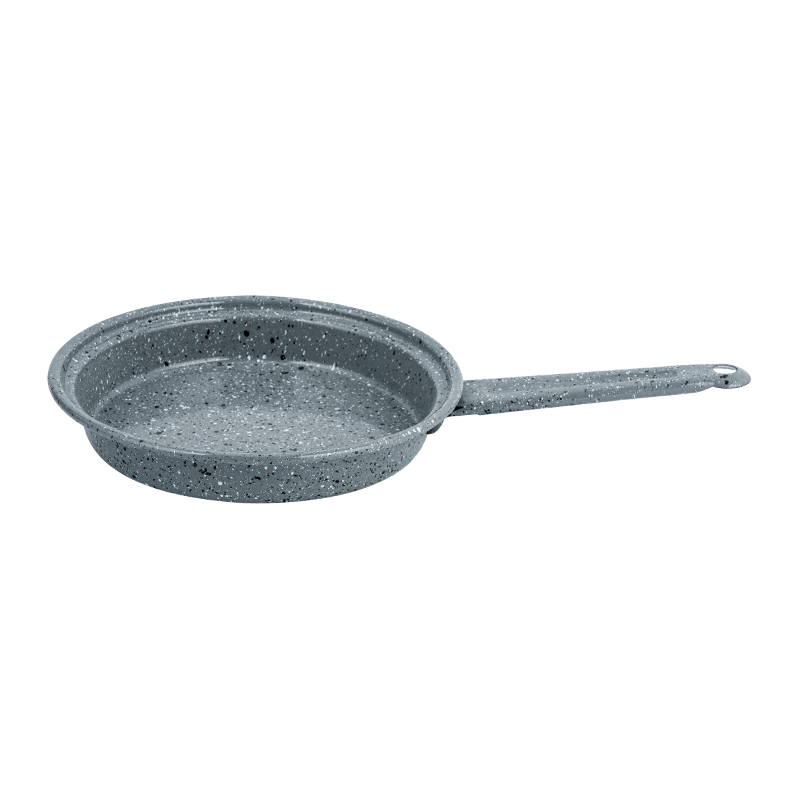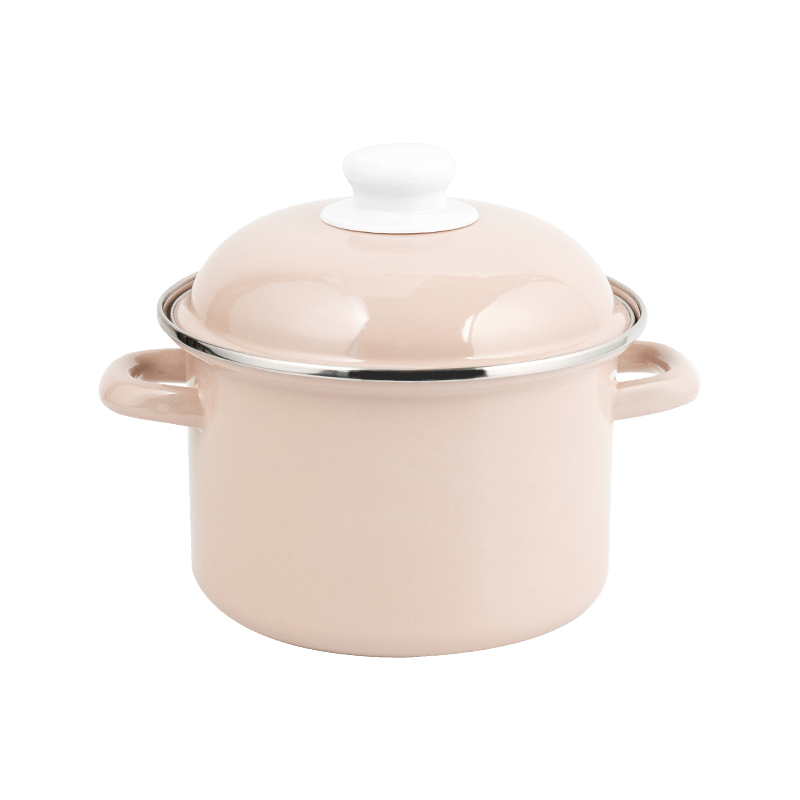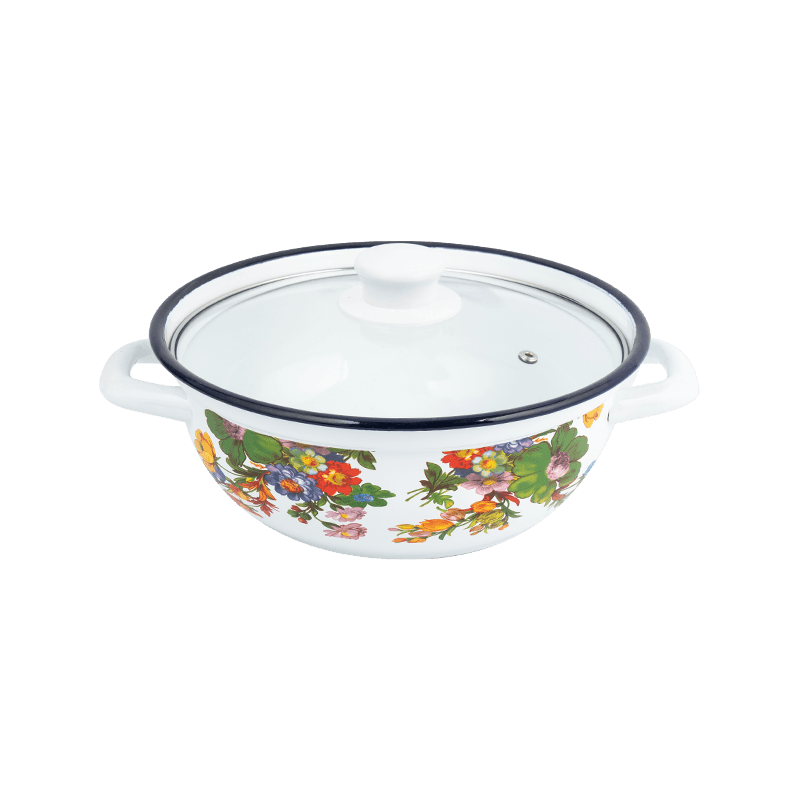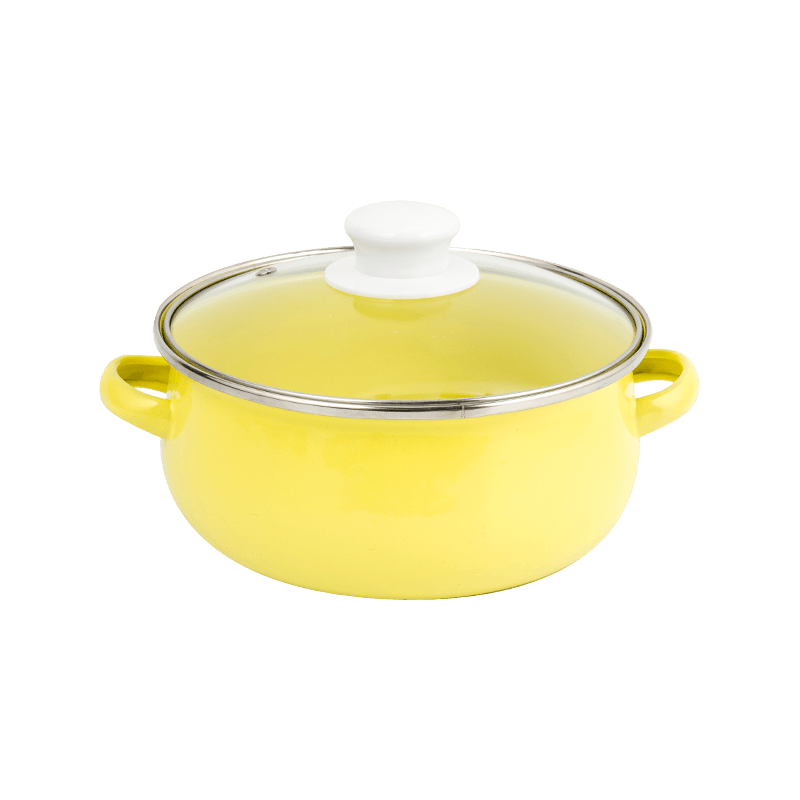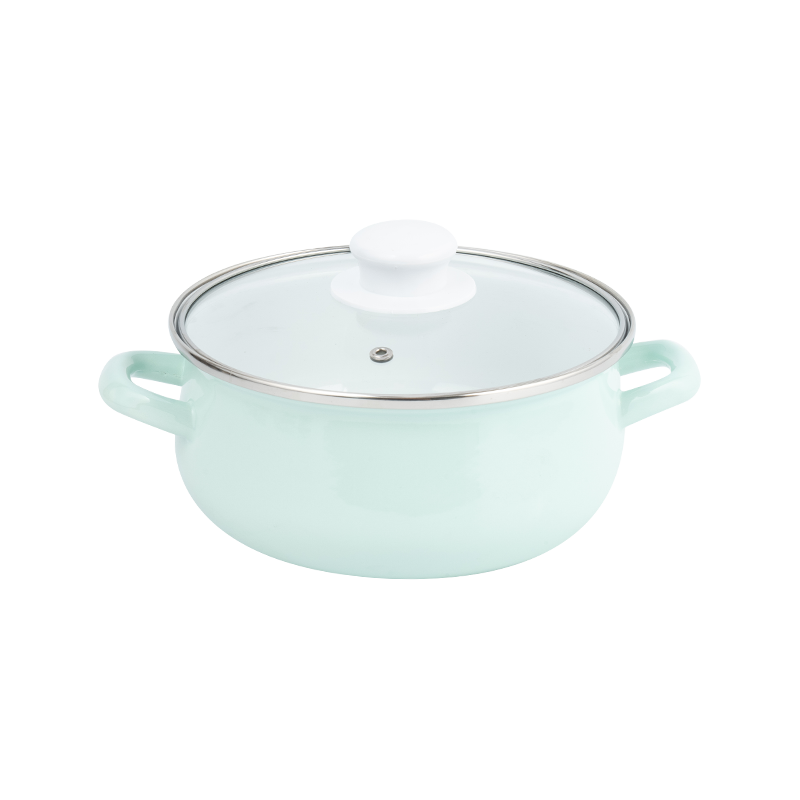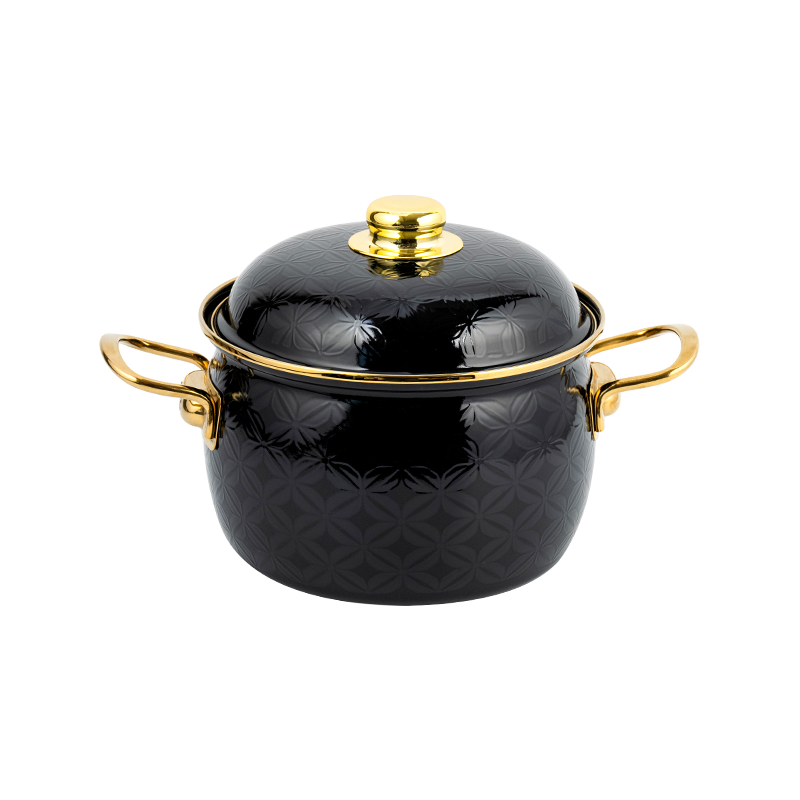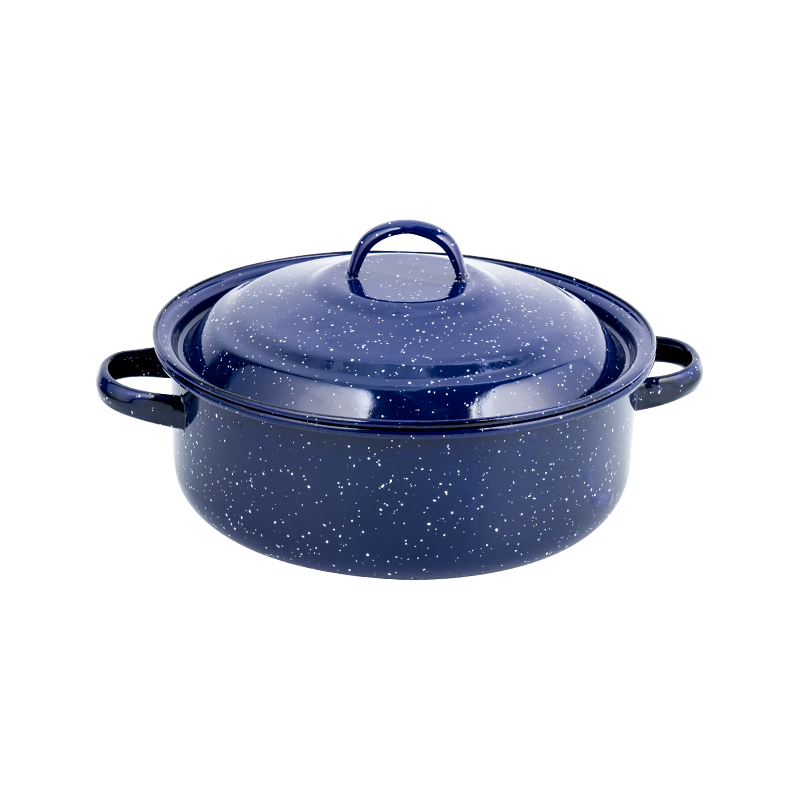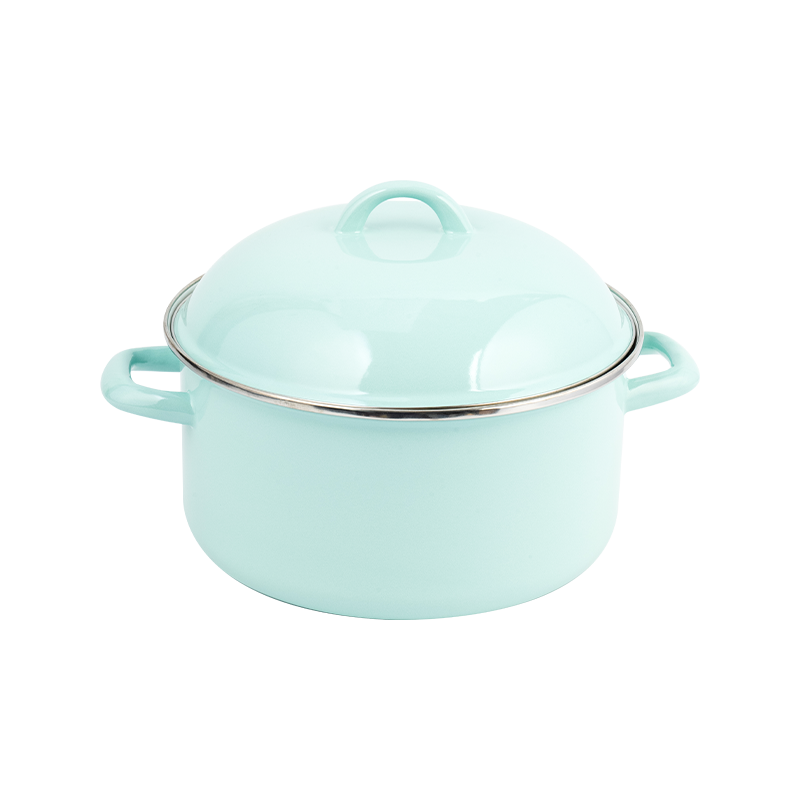In the realm of kitchenware, the whistling enamel kettle stands out as a classic and functional appliance.
Concept of a Whistling Enamel Kettle
A whistling enamel kettle is a type of stovetop kettle designed to produce an audible whistling sound when water reaches boiling point. The kettle typically consists of a metal body, often made from steel or iron, coated with an enamel finish. The enamel coating is a glass-like layer fused to the metal at high temperatures, providing durability, resistance to rust, and a smooth, easy-to-clean surface. The whistling mechanism is usually integrated into the spout or lid; as steam pressure builds during boiling, it forces air through a small chamber or whistle, creating the characteristic sound. This feature serves as an alert system, preventing overboiling and enhancing safety in kitchen environments.
Types of Whistling Enamel Kettles
Whistling enamel kettles are available in various designs and specifications to cater to diverse user needs. Common types include:
-
Capacity-based varieties: These range from small kettles (e.g., 1-2 liters) suitable for individual use to larger models (e.g., 3-5 liters) for family or commercial settings.
-
Design variations: Some kettles feature ergonomic handles, heat-resistant materials, or decorative enamel finishes in multiple colors and patterns.
-
Functional differences: While most are intended for stovetop use, some models may include additional features such as built-in temperature gauges or compatibility with induction cooktops. The enamel coating can also vary in thickness and composition, affecting heat distribution and longevity.
Applications
Whistling enamel kettles are primarily used in domestic kitchens for boiling water for beverages like tea and coffee, as well as for cooking purposes. Their portability and durability make them suitable for outdoor activities such as camping or picnics, where a reliable heat source is available. In commercial settings, including cafes or tea houses, these kettles can serve as aesthetic and functional tools for traditional brewing methods. The enamel coating's non-reactive properties ensure that it does not impart flavors to the water, making it ideal for maintaining beverage purity.
Comparison with Other Kettles
When compared to other kettle types, whistling enamel kettles exhibit distinct characteristics:
-
Vs. stainless steel kettles: Whistling enamel kettles often provide better heat retention due to the enamel layer, but they may be heavier and require careful handling to avoid chipping. Stainless steel kettles are generally more lightweight and resistant to impact but lack the whistling feature in many cases.
-
Vs. electric kettles: Electric kettles offer faster boiling times and automatic shut-off features, but whistling enamel kettles do not rely on electricity, making them energy-efficient and usable during power outages. Additionally, enamel kettles avoid potential plastic components found in some electric models, which can be a consideration for health-conscious users.
-
Vs. glass kettles: Glass kettles allow visual monitoring of water boiling but are more fragile and may not include a whistling mechanism. Whistling enamel kettles combine durability with an audible alert, though they are less transparent.
Frequently Asked Questions (FAQ)
-
How does the whistling mechanism work?
The whistling mechanism operates through steam pressure. As water boils, steam exits through a small opening in the spout or lid, causing a whistle to vibrate and produce sound. This alerts users to turn off the heat. -
Is the enamel coating safe for boiling water?
Yes, enamel coatings are generally considered safe when manufactured to industry standards. They are non-toxic and do not leach chemicals into the water, provided the coating remains intact without cracks or chips. -
How should a whistling enamel kettle be cleaned?
It is recommended to clean the kettle with warm, soapy water and a soft cloth to avoid scratching the enamel. Abrasive cleaners should be avoided to prevent damage to the coating. For mineral deposits, a vinegar solution can be used occasionally. -
Can a whistling enamel kettle be used on all stovetops?
Most whistling enamel kettles are compatible with gas, electric, and ceramic stovetops. However, induction compatibility depends on the base material; some models may require an induction-friendly interface. -
What is the average lifespan of a whistling enamel kettle?
With proper care, a whistling enamel kettle can last for several years. Factors such as frequency of use, avoidance of thermal shock (e.g., sudden temperature changes), and maintenance of the enamel coating influence durability.
In summary, the whistling enamel kettle is a practical and timeless kitchen tool that combines functional alert systems with durable enamel finishes. Its versatility across various settings and comparisons with alternative kettles highlight its unique benefits. By understanding its features and proper usage, consumers can make informed decisions based on their specific needs.

 English
English 中文简体
中文简体




